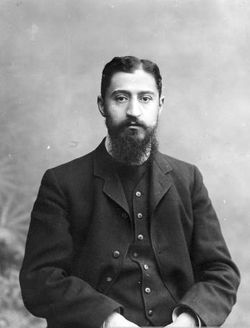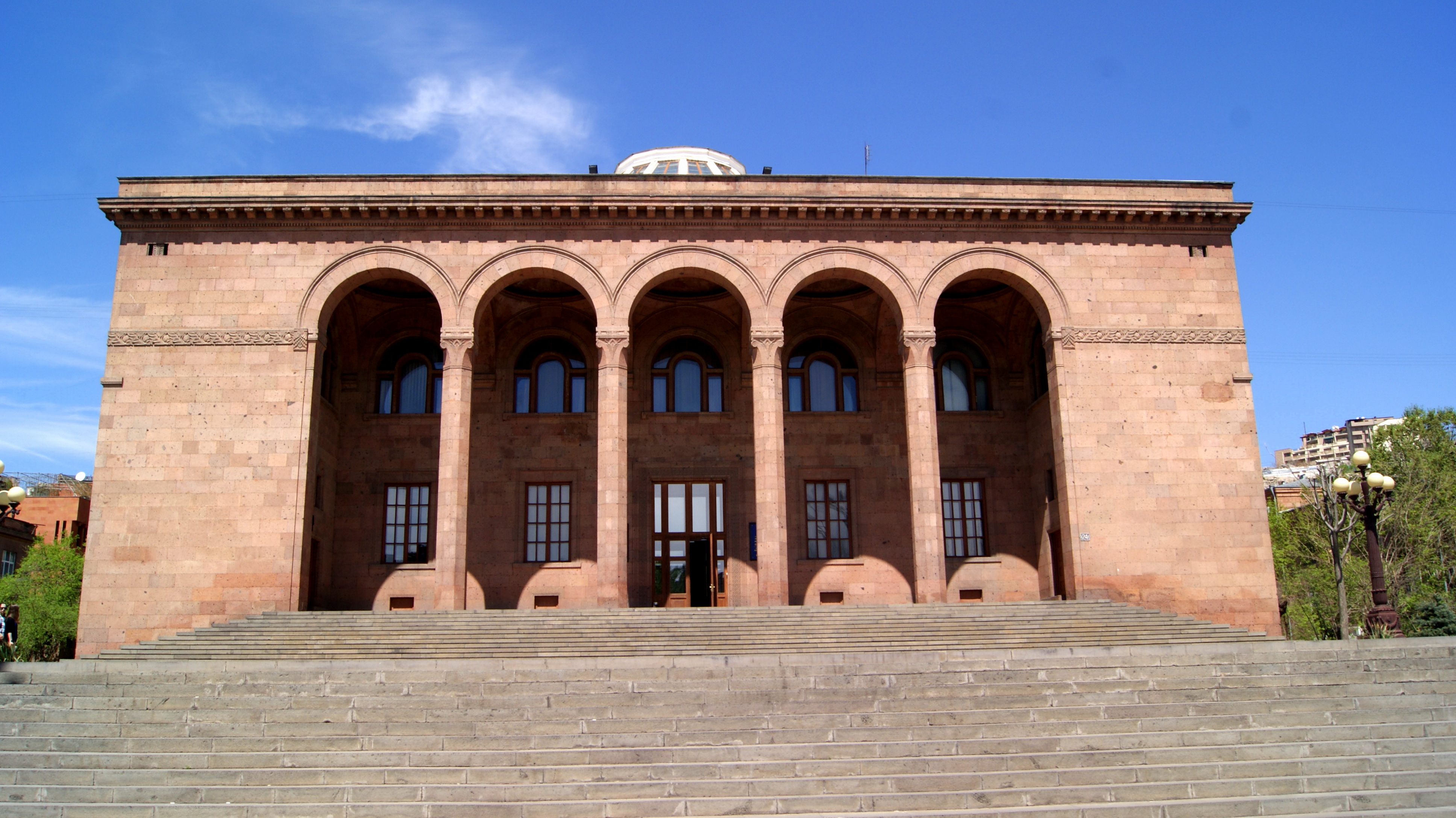|
Sahak Sevada
Sahak Sevada () was ruler of Gardman between 895940 and father-in-law of King Ashot II of Armenia. He was the son of Grigol Hamam and brother of Atrnerseh Atrnerseh () (d. 870's) was an Armenian ruler of the Principality of Khachen. He was the son and successor of Sahl Smbatean. According to the 10th century Armenian historian Movses Kaghankatvatsi, Atrnerseh's family was descended from the Arrans ..., ruler of Hereti. His possessions covered Parisos, a district of Artsakh, as well as part of Utik-Gardman and Dzoroget. In Book III of the medieval Armenian text '' The History of the Country of Albania'', Sahak Sevada is described as a "brave and capable man" who was a "lover of letters and appointed writers to his household." The author adds that " Smbat, king of Armenia, fought against him ahak Sevadawith zeal and skill, but could not bring him to submission." Sahak's contemporary, Catholicos Hovhannes Draskhanakerttsi, describes him as a man of "great wisdom." The aut ... [...More Info...] [...Related Items...] OR: [Wikipedia] [Google] [Baidu] |
Gardman
Gardman ( hy, Գարդման), also known as Gardmank, was one of the eight cantons of the ancient province of Utik in the Kingdom of Armenia and simultaneously, together with the canton of Tuchkatak, an Armenian principality. It roughly corresponded within the Gazakh, Shamkir, Aghstafa, Dashkasan, Goygol, Tovuz, Gadabay districts of modern-day Azerbaijan and the original Tavush Region of Armenia. Gardman was also the name of the central fortress of the canton. History In prehistoric times Gardman was the homeland of the proto-Armenian tribe Gardman. Contemporary Armenian authors referred to the historical area of Gardman as Northern Artsakh. During the reign of the Arshakuni kings of Armenia (66–428 A.D.), Gardman was the seat of the ''nakharars'' of Utik'. For this reason, it was sometimes called "Gardmantsvots ishkhanutyun", or the principality of Gardman. Gardman was acquired by Caucasian Albania in 387 following the partition of Armenia. In the seventh century the l ... [...More Info...] [...Related Items...] OR: [Wikipedia] [Google] [Baidu] |
Hovhannes Draskhanakerttsi
Hovhannes Draskhanakerttsi ( hy, Յովհաննէս Դրասխանակերտցի, John of Drasxanakert, various spellings exist), also called John V the Historian, was Catholicos of Armenia from 897 to 925, and a noted chronicler and historian. He is known for his ''History of Armenia.'' He is also the author of a list of Armenian Catholicoi titled ''Shar Hayrapetatsʻn Hayotsʻ''.Yovhannes Drasxanakertc'i/John Katholikos (1987). '' History of Armenia by John Katholikos''. Translated by Maksoudian, Krikor H. Atlanta, Georgia: Scholars Press. p. 8–23. What little is known about Catholicos Hovhannes's life comes from his own written works. He gives his own birthplace as Draskhkert (Draskhanakert), which has been variously identified with modern Ashtarak or placed near the historical canton of Shirak in Ayrarat province (later medieval Armenian historians claimed he was from Garni or Dvin). He was related to his predecessor as catholicos, Mashtots I, under whom he studied. Ho ... [...More Info...] [...Related Items...] OR: [Wikipedia] [Google] [Baidu] |
940 Deaths
94 may refer to: * 94 (number) * one of the years 94 BC, AD 94, 1994, 2094, etc. * Atomic number 94: plutonium Plutonium is a radioactive chemical element with the symbol Pu and atomic number 94. It is an actinide metal of silvery-gray appearance that tarnishes when exposed to air, and forms a dull coating when oxidized. The element normally exhibi ... * Saab 94 See also * * List of highways numbered {{Numberdis ... [...More Info...] [...Related Items...] OR: [Wikipedia] [Google] [Baidu] |
House Of Aranshahik
A house is a single-unit residential building. It may range in complexity from a rudimentary hut to a complex structure of wood, masonry, concrete or other material, outfitted with plumbing, electrical, and heating, ventilation, and air conditioning systems.Schoenauer, Norbert (2000). ''6,000 Years of Housing'' (rev. ed.) (New York: W.W. Norton & Company). Houses use a range of different roofing systems to keep precipitation such as rain from getting into the dwelling space. Houses may have doors or locks to secure the dwelling space and protect its inhabitants and contents from burglars or other trespassers. Most conventional modern houses in Western cultures will contain one or more bedrooms and bathrooms, a kitchen or cooking area, and a living room. A house may have a separate dining room, or the eating area may be integrated into another room. Some large houses in North America have a recreation room. In traditional agriculture-oriented societies, domestic animals suc ... [...More Info...] [...Related Items...] OR: [Wikipedia] [Google] [Baidu] |
Yerevan State University
Yerevan State University (YSU; hy, Երևանի Պետական Համալսարան, ԵՊՀ, ''Yerevani Petakan Hamalsaran''), also simply University of Yerevan, is the oldest continuously operating public university in Armenia. Founded in 1919, it is the largest university in the country. It is thus informally known as Armenia's "mother university" (Մայր ԲՈւՀ, ''Mayr Buh''). Of its 3,150 employees, 1,190 comprise the teaching staff, which includes 25 academicians, 130 professors, 700 docents (associate professors), and 360 assistant lecturers. The university has 400 researchers, 1,350 post-graduate students, and 8,500 undergraduates, including 300 students from abroad. Instruction is in Armenian, but instruction in Russian or English for foreign students is available as needed. The academic year is from September 1 through June 30. According to University Ranking by Academic Performance (URAP), it was the top-ranked university in Armenia and the 954th in the world in 2 ... [...More Info...] [...Related Items...] OR: [Wikipedia] [Google] [Baidu] |
Kingdom Of Syunik
Kingdom of Syunik ( hy, Սյունիքի թագավորություն), also known as the Kingdom of Baghk and sometimes as the Kingdom of Kapan, was a medieval dependent Armenian kingdomArmenia and Iran // "''In 1162, eastern Armenia was attacked by the atabeg Īldegoz of Azerbaijan. In 1170, with a new invasion, the Armenian Kingdom of Siunikʿ was terminated.''"Armenia // |
Ishkhan (title)
''Ishkhan'' ( hy, իշխան) was a feudal title in medieval Armenia, literally meaning ''prince''. The word originates from Iranian ''*xšāna-'' (cf. Sogdian ''axšāwan'', "king"). The title ishkhan was used both in parallel and in substitute of other Armenian feudal titles, such as nakharar, paron, douks, ter, or melik Мelik (also transliterated as ''Meliq'') ( ''melikʿ''; from ar, ملك '' malik'' (king)) was a hereditary Armenian noble title, in various Eastern Armenian principalities known as ''melikdom''s encompassing modern Yerevan, Kars, Nakhic .... Ishkhan is also an Armenian first name. References Sources * * Medieval Armenia Armenian noble titles Armenian given names {{armenia-hist-stub ... [...More Info...] [...Related Items...] OR: [Wikipedia] [Google] [Baidu] |
Bagratid Armenia
The Bagratid Kingdom of Armenia, also known as Bagratid Armenia ( xcl, Բագրատունեաց Հայաստան, or , , 'kingdom of the Bagratunis'), was an independent Armenian state established by Ashot I Bagratuni of the Bagratuni dynasty in the early 880s following nearly two centuries of foreign domination of Greater Armenia under Arab Umayyad and Abbasid rule. With each of the two contemporary powers in the region—the Abbasids and Byzantines—too preoccupied to concentrate their forces in subjugating the region, and with the dissipation of several of the Armenian ''nakharar'' noble families, Ashot succeeded in asserting himself as the leading figure of a movement to dislodge the Arabs from Armenia. Ashot's prestige rose as both Byzantine and Arab leaders—eager to maintain a buffer state near their frontiers—courted him. The Abbasid Caliphate recognized Ashot as "prince of princes" in 862 and, later on, as king (in 884 or 885). The establishment of the Bagratuni k ... [...More Info...] [...Related Items...] OR: [Wikipedia] [Google] [Baidu] |
Sahakanuysh
Sahakanuysh ( hy, Սահականույշ, 10th century) was the third Queen of the Bagratid Kingdom and member of Aranshahik Dynasty. She was the wife of the third Bagratuni king - Ashot the Iron (914-928). Sahakanuysh was the daughter of Prince of Gardman Sahak Sevada. She had two brothers - Grigor the Great, prince of Khachen ( Nagorno-Karabakh Republic), and Hovhannes-Senekerim, prince of Parisos. The latter was situated in Utik province of Armenia (nowadays - Azerbaijan). Her sister Shahandukht married to Smbat Syuni Smbat, Sambat, Smpad or Sempad may refer to: * Smbat IV Bagratuni (died 616/7), Armenian noble in Byzantine and Sasanian service, marzpan of Hyrcania and Armenia * Smbat VI Bagratuni (died 726), presiding prince of Armenia * Smbat VII Bagratuni ..., and became the first queen of Syunik kingdom. Ashot the Iron and Sahakanuysh had no children. Sources comm. 59* К. В. Тревер. ОЧЕРКИ ПО ИСТОРИИ И КУЛЬТУРЕ КАВ ... [...More Info...] [...Related Items...] OR: [Wikipedia] [Google] [Baidu] |
Armenian National Academy Of Sciences
The National Academy of Sciences of the Republic of Armenia (NAS RA) ( hy, Հայաստանի Հանրապետության գիտությունների ազգային ակադեմիա, ՀՀ ԳԱԱ, ''Hayastani Hanrapetut’yan gitut’yunneri azgayin akademia'') is the Armenian national academy, functioning as the primary body that conducts research and coordinates activities in the fields of science and social sciences in Armenia. It is a member of the International Science Council. History The Academy of Sciences of the Armenian Soviet Socialist Republic was founded on 10 November 1943, on the basis of the Armenian Branch of the Soviet Academy of Sciences, which was established almost 10 years earlier, in 1935. Among its founders were Joseph Orbeli, Stepan Malkhasyants, Ivan Gevorkian and Victor Ambartsumian; Orbeli became the first president of the academy. Presidents *Joseph Orbeli (1943–1947) *Victor Ambartsumian (1947–1993) *Fadey Sargsyan (1993–2006) * Radik Martiro ... [...More Info...] [...Related Items...] OR: [Wikipedia] [Google] [Baidu] |
Bagrat Ulubabyan
Bagrat Arshaki Ulubabyan ( hy, Բագրատ Արշակի Ուլուբաբյան; russian: link=no, Баграт Аршакович Улубабян; December 9, 1925 – November 19, 2001) was an Armenian writer and historian, known most prominently for his work on the histories of Nagorno-Karabakh and Artsakh. Biography Early life and education Ulubabyan was born in the village of Mushkapat in the Martuni region of the Nagorno-Karabakh Autonomous Oblast (NKAO), Azerbaijan SSR, on December 9, 1925. In 1944, he graduated from Shusha's Pedagogical Institute. Two years later, he received his degrees in Armenian language and Armenian literature from Baku's Pedagogical Institute. From 1949 until 1967, he returned to Nagorno-Karabakh and was the head of the province's Writers Union. During those years, he was also a writer for the Armenian language newspaper ''Sovetakan Gharabagh'' (''Soviet Karabakh'') and a deputy to the head of NKAO's executive committee. In 1968, Ulubabyan m ... [...More Info...] [...Related Items...] OR: [Wikipedia] [Google] [Baidu] |
John Of Hereti
John Senekerim () was the ruler of the Kingdom of Hereti from 951 to 959. John is the only known child of King Ishkhanik. During his reign Hereti reached an apex of power and prestige, mainly after the annexation of the right bank of Caucasian Albania. Armenian historian Movses Kaghankatvatsi calls him the "restorer of the Kingdom of Albania". Later he annexed parts of Kakheti and adopted the title of "King of the Tsanars". John had a good relations with the representatives of the Sallarid dynasty ( Daylam) and with David III Kuropalates of Tao. Like his father Ishkhanik and grandmother Dinar The dinar () is the principal currency unit in several countries near the Mediterranean Sea, and its historical use is even more widespread. The modern dinar's historical antecedents are the gold dinar and the silver dirham, the main coin of ..., he contributed a lot to the conversion of his kingdom. He died in 959 without heirs. As a result the prince of Kakheti Kvirike II took t ... [...More Info...] [...Related Items...] OR: [Wikipedia] [Google] [Baidu] |




